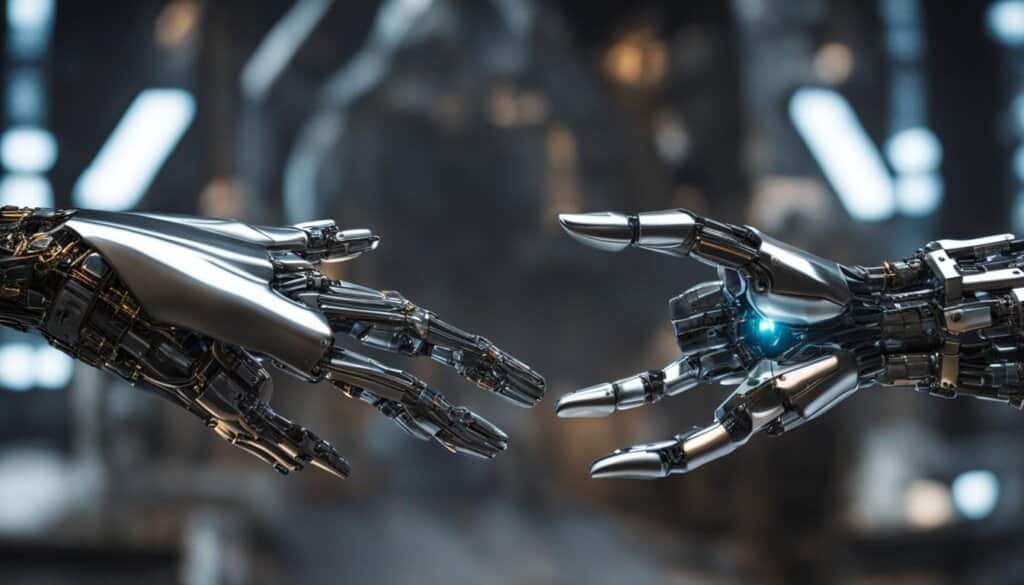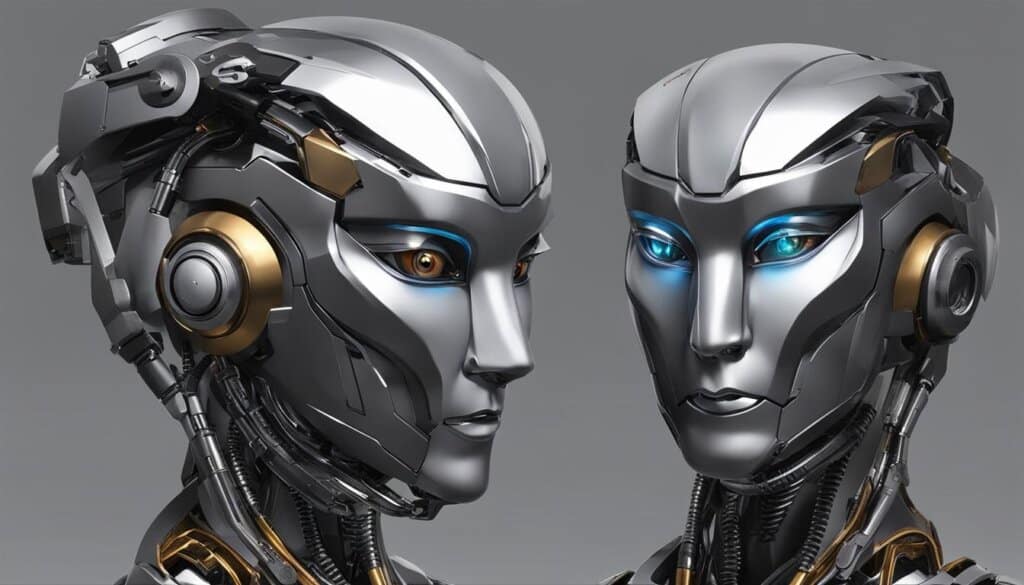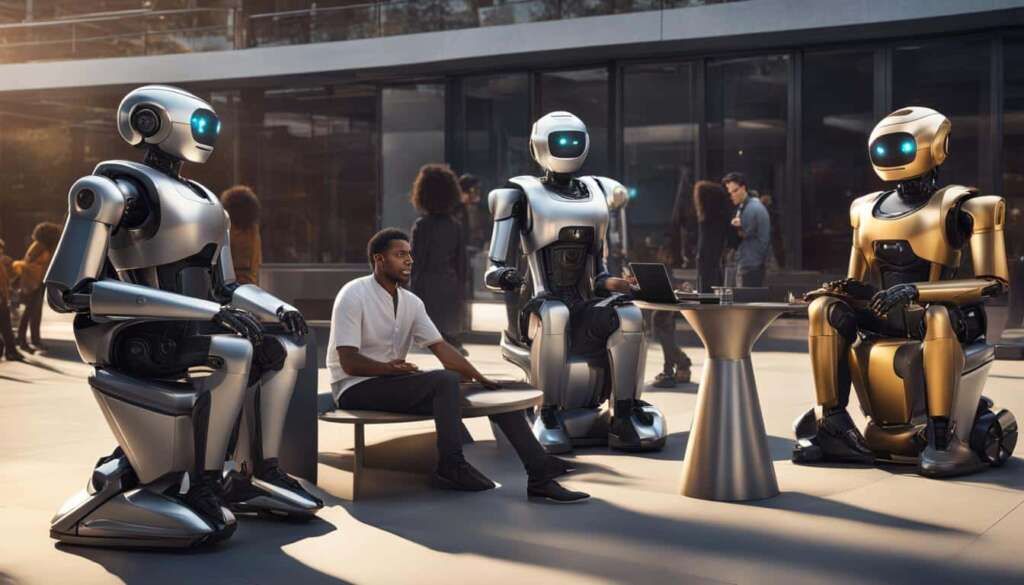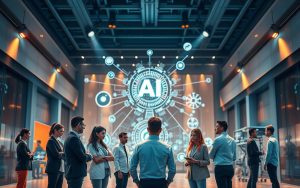Table of Contents
Chat robots have revolutionized the way we interact with technology. With their ability to simulate human-like conversations, these AI-powered bots have taken the world by storm. One such example is ChatGPT, developed by OpenAI, a cutting-edge prototype that can understand natural human language and generate detailed written text.
Part of the Generative Pre-Trained Transformer (GPT) family, ChatGPT utilizes advanced AI and machine learning techniques to provide users with accurate and comprehensive responses. Trained on a vast dataset from the internet, these chat robots have evolved since their conception in 2015.
Chat robots like ChatGPT offer an alternative to traditional search engines, providing detailed answers, solutions to complex questions, and even code writing capabilities. However, it is important to note that while they have immense potential, they still lack the nuanced understanding, critical-thinking skills, and ethical decision-making abilities necessary for certain professions, such as journalism.
In the following sections, we will explore the development of chat robots, their impact on various professions, the importance of trust in human-technology interaction, the uncanny valley effect, their role in human-computer interaction, and the future directions and implications of this evolving technology.
The Development of Chat Robots
ChatGPT, developed by the OpenAI foundation, represents an exciting milestone in the evolution of chat robots. Founded by Elon Musk and Sam Altman in 2015, the OpenAI foundation is dedicated to advancing digital intelligence for the betterment of humanity. Using the cutting-edge technology of AI and machine learning, ChatGPT is trained on a vast dataset of text from the internet, allowing it to engage in natural-language conversations with users.
The development of ChatGPT has been focused on creating a user-friendly chatbot that not only provides answers but also offers engagement and interaction. ChatGPT has been designed to answer follow-up questions, admit mistakes, challenge incorrect premises, and even reject inappropriate requests. This dynamic and responsive approach to chatbot development enhances the overall user experience by simulating human-like conversation.
Despite the advancements in chatbot technology, there are still limitations to consider. Chat robots such as ChatGPT may lack up-to-date knowledge and occasionally provide incorrect or nonsensical answers. While they have shown promise in various applications, it’s important to recognize that they are still evolving and have room for improvement.
“ChatGPT represents the ongoing development and refinement of chat robots, offering a glimpse into the exciting possibilities of AI technology in enhancing human-computer interaction.”
As AI technology continues to progress, chat robots like ChatGPT hold great potential for revolutionizing communication and interaction between humans and computers. With further advancements and refinements, chatbots may become even more sophisticated in understanding human language and providing valuable assistance in various domains. Additionally, future developments in chatbot technology could lead to exciting discoveries and advancements in fields such as education, information retrieval, business, and e-commerce.
However, it remains crucial to recognize that chat robots are tools and should not be seen as complete substitutes for human expertise and interaction. While they can enhance certain tasks and provide valuable support, they cannot fully replace the nuanced perspectives, critical-thinking skills, and ethical decision-making abilities of human professionals.
The potential of AI technology in chatbot development
AI technology plays a vital role in the development of chat robots like ChatGPT. By leveraging AI algorithms and machine learning, developers can train chatbots to understand and respond to human language in a more natural and contextually appropriate manner. This helps in creating a more seamless and human-like user experience, ultimately enhancing human-computer interaction.
AI technology enables chatbots to analyze vast amounts of text data, allowing them to learn and adapt their responses based on patterns and contextual cues. This continual learning process helps chatbots improve their accuracy and relevance over time, providing users with increasingly valuable and helpful information.
As AI technology continues to advance, we can expect further developments in chatbot capabilities. These advancements may include the ability to understand and interpret complex user queries, provide personalized assistance, and even exhibit traits such as empathy and emotional intelligence in their interactions.
In conclusion, the development of chat robots like ChatGPT by the OpenAI foundation showcases the potential of AI technology to revolutionize human-computer interaction. While chatbots have their limitations, they offer exciting possibilities in improving communication, providing assistance, and simplifying tasks. As we move forward, it is vital to continue exploring the ethical and societal implications of AI technology and ensure that its integration into our lives remains beneficial and aligned with human values.
Chat Robots vs. Human Professions
There has been much speculation surrounding the potential for chat robots to replace humans in various professions. Academics have already utilized chat robots like ChatGPT to provide responses to exam queries that could potentially earn full marks if submitted by undergraduate students. Programmers are also leveraging chat robots to quickly solve coding challenges. While chat robots are capable of generating text that closely resembles human language, they lack critical-thinking skills, ethics, and up-to-date knowledge. This limitations make it highly unlikely that they can completely replace professions that require these essential qualities. Professions such as playwrights, professors, programmers, and journalists depend on human expertise and intuition, traits that chat robots currently lack.
ChatGPT and other chatbots should be regarded as valuable tools that can assist humans in completing tasks more efficiently, rather than as complete substitutes for human professionals. Although chat robots have made significant advancements in AI technology and can perform specific tasks admirably, they do not possess the comprehensive abilities of human professionals. Experience, intuition, and creativity are crucial components of many human professions that cannot be replicated by AI.
“The limitations of chat robots highlight the irreplaceable value of human expertise in various professions. While AI technology continues to evolve, humans bring a unique blend of skills, intuition, and ethics that cannot be emulated by machines.” – Dr. Emma Williams, AI Ethics Researcher
It is essential to recognize that chat robots like ChatGPT have their place as AI-assisted tools in various industries. Human professionals can leverage these chatbots to enhance their productivity and efficiency. Rather than fearing the replacement of jobs, we should focus on harnessing the collaborative potential between humans and AI in the workplace. By working together, humans and chat robots can achieve greater outcomes and augment our abilities.
As technology advances, the impact of AI on various professions will continue to evolve. It is crucial for society to facilitate ongoing dialogue and understanding of these developments. While chat robots may contribute to the transformation of certain roles, it is imperative to maintain a balanced approach that respects the value of human expertise and ensures that AI is ethically deployed.
Professions at Risk:
- Playwrights
- Professors
- Programmers
- Journalists
Trust in Chat Robots
Trust plays a vital role in human-technology interaction, including our interactions with chat robots. Studies have shown that trust in technology is influenced by factors such as prior experience, self-efficacy in handling technology, and personality traits. People are more likely to trust robots that exhibit familiar characteristics and display positive emotions. However, trust in chat robots can be more abstract compared to trust in physical robots due to the hidden nature of AI. Situational and environmental factors, as well as individual factors like age, gender, education, and income level, also influence trust.
One interesting concept related to trust in chat robots is the notion of “robot use self-efficacy.” This refers to an individual’s belief in their ability to use and interact with robots effectively. Studies have found that high levels of robot use self-efficacy predict greater acceptance of robots. This suggests that individuals who have confidence in their abilities to engage with chat robots are more likely to trust them.
Trust in chat robots is a complex topic that requires further research and understanding. It is important to investigate the factors that shape trust in human-technology interactions to develop chat robots that can build and maintain trust with users. By understanding the nuances of trust, we can create chat robots that foster positive relationships and effectively support human tasks and interactions.

The Uncanny Valley Effect
The uncanny valley effect refers to the aversion or eeriness people may feel towards humanoid objects that closely resemble humans but have slight imperfections. When faced with objects that are almost human-like, but not quite, individuals may experience a sense of unease or discomfort. This effect can elicit negative emotions and revulsion, undermining the appeal of human-like robots in certain contexts.
There are several possible explanations for the uncanny valley effect. One theory suggests that it arises from a conflict in cognitive representations. When an object looks almost human, our brain expects it to behave like a human, but the subtle imperfections disrupt this expectation, resulting in an unsettling experience.
Another explanation for the uncanny valley effect is rooted in evolutionary factors. Some researchers propose that our aversion to human-like robots may be linked to mate selection. Evolutionary preferences may have shaped our perception to find certain characteristics attractive and deviations from these norms as repulsive.
In addition, the uncanny valley effect may be connected to pathogen avoidance. Humans have an innate desire to avoid potential sources of disease or infection. When confronted with humanoid objects that mimic humans but possess slight imperfections, we may interpret them as potential carriers of disease, triggering a revulsion response.
The uncanny valley effect may result from a conflict in cognitive representations and evolutionary preferences, as well as the perception of potential pathogen carriers.
Cultural, religious, and biological factors also influence our perception of humanoid objects. Cultural norms and religious beliefs shape our understanding of what is considered “normal” and acceptable in terms of human appearances. Biological factors, such as facial recognition processes, further influence our perception and evaluation of humanoid objects.
Researchers have explored the relationship between the uncanny valley effect and social responses. Studies have shown that the aversion associated with the uncanny valley can impact our willingness to interact with humanoid robots and may inhibit the formation of social bonds. Additionally, the introduction of human-like robots into society raises questions about human identity and the potential disruption of our sense of self.

Understanding the uncanny valley effect is crucial for designing chat robots that can effectively interact with humans without eliciting negative emotions. By studying the factors that contribute to the uncanny valley effect, researchers and engineers can aim to create robots that strike the right balance between familiarity and imperfection, enabling more seamless and comfortable human-robot interactions.
The Role of Chatbots in Human-Computer Interaction
Chatbots have revolutionized the field of human-computer interaction (HCI) by providing a more flexible and human-like interface for communication. Designed to interact with users through natural language, chatbots have become essential tools in various fields, including education, information retrieval, business, and e-commerce.
Within HCI research, chatbots are recognized as specific cognitive artefacts that aid cognition and simplify tasks. The focus of HCI research extends beyond the technical development of chatbot interfaces to encompass expanding representational possibilities, enabling technology-supported cooperative work, and deepening our understanding of human perception and cognition.
By studying the interaction between humans and chatbots, researchers aim to uncover patterns of successful and unsuccessful interactions, assign social roles, and establish social relationships and bonds. Understanding the socio-cognitive nature of human-chatbot interaction is essential for advancing the field of HCI and creating more effective and intuitive chatbot interfaces.
Enhancing User Experience and Efficiency
One of the main advantages of chatbots in HCI is their ability to enhance user experience and streamline tasks. Chatbots offer a conversational and intuitive interface that allows users to communicate and interact with technology in a more natural and fluid way. This not only improves user satisfaction but also increases efficiency and productivity, as users can quickly and easily access information or perform tasks using simple conversational commands.
Empowering Users and Expanding Accessibility
Chatbots also have the potential to empower users and increase accessibility. Through their conversational nature, chatbots allow individuals with limited technical skills or disabilities to access and interact with complex systems or services. By providing a user-friendly and inclusive interface, chatbots can bridge the gap between technology and users who may otherwise face barriers or challenges in traditional human-computer interactions.
“Chatbots in HCI research aim to uncover patterns of successful and unsuccessful interactions, assign social roles, and establish social relationships and bonds.”
The Role of Chatbots in Collaborative Work
Chatbots have also found applications in collaborative work environments, facilitating communication and coordination between individuals or teams. They can act as digital assistants, helping to manage schedules, coordinate tasks, and provide real-time information, ultimately improving efficiency and teamwork. This collaborative aspect of chatbots in HCI enables seamless information exchange and supports effective collaboration in both professional and personal settings.
Overall, the role of chatbots in HCI is instrumental in creating more natural, efficient, and inclusive human-computer interactions. As technology continues to advance, chatbots will play an increasingly crucial role in enhancing user experience, empowering users, and facilitating collaborative work. Continued research and innovation in this area will pave the way for even more sophisticated and impactful chatbot interfaces in the future.
Future Directions and Implications
The future of chat robots holds great potential for improving human-computer interaction and communication. As AI technology continues to advance, chat robots like ChatGPT may become more sophisticated, with improved conversational abilities and a better understanding of human language. With further development, chat robots have the capability to serve as helpful assistants, providing valuable information, answering questions, and offering advice.
In addition to assisting with day-to-day tasks, chat robots could also perform complex tasks on behalf of humans, saving time and energy. Furthermore, as chat robots continue to learn and evolve, they may even contribute to the discovery of new knowledge and insights that can benefit society as a whole. However, it is important to recognize that chat robots are tools and not replacements for human expertise and interaction.
Further research is needed to address the challenges that come with the advancement of chat robots. Trust, ethics, and the impact on human relationships with technology are important areas requiring attention. Building trust in human-chat robot interactions is essential, as is ensuring that chat robots adhere to ethical guidelines. Moreover, it is crucial to understand the potential consequences and implications of integrating AI into society and to approach its development with careful consideration.
FAQ
What is ChatGPT?
ChatGPT is a prototype dialogue-based AI chatbot developed by OpenAI. It is part of the Generative Pre-Trained Transformer (GPT) family of text-generating AIs and has the ability to simulate human-like conversations.
How is ChatGPT trained?
ChatGPT is trained using AI and machine learning on a large dataset of text from the internet. It is designed to understand natural human language and generate detailed written text as responses.
Can chat robots replace humans in professions?
While chat robots like ChatGPT have shown promise in various applications, they lack critical-thinking skills, ethics, and up-to-date knowledge. Therefore, it is unlikely that they can fully replace professions that require these qualities, such as playwrights, professors, programmers, and journalists.
What factors influence trust in chat robots?
Trust in chat robots is influenced by factors such as prior experience, self-efficacy in handling technology, personality traits, and the familiarity and positive emotions displayed by the robots. Situational and individual factors, such as age, gender, education, and income level, also play a role in shaping trust.
What is the uncanny valley effect?
The uncanny valley effect refers to the aversion or eeriness people may feel towards humanoid objects that closely resemble humans but have slight imperfections. It is influenced by biological, evolutionary, cultural, and religious factors, and understanding it is crucial for designing chat robots that can effectively interact with humans without eliciting negative emotions.
What is the role of chatbots in human-computer interaction?
Chatbots are designed to interact with users through natural language, providing a more flexible and human-like interface for communication. They are considered specific cognitive artefacts that aid cognition and simplify tasks. They have applications in various fields, including education, information retrieval, business, and e-commerce.
What is the future of chat robots?
As AI technology continues to advance, chat robots like ChatGPT may become more sophisticated, with improved conversational abilities and better understanding of human language. They could serve as helpful assistants, providing information, answering questions, and performing tasks on behalf of humans. However, it is important to recognize their limitations and understand that they are tools, not replacements for human expertise and interaction.









